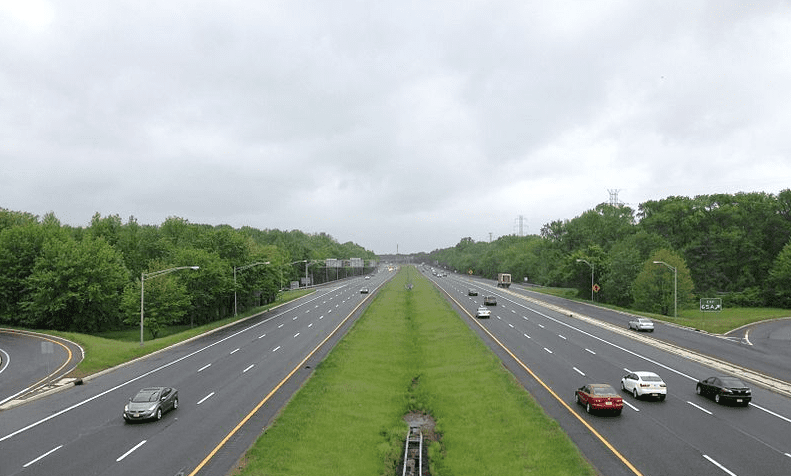Introduction: Gena Philibert-Ortega is a genealogist and author of the book “From the Family Kitchen.” In this blog article, Gena explains that understanding transportation is an important part of getting to know our ancestors’ world – and focuses on the development of the Interstate Highway System.
Migration is something we must consider as we trace our ancestors’ lives. Our ancestors were mobile – maybe not nearly as much as we are today, but they traveled across seas, and then often went further inland to set up their new homes. Knowing where and how they arrived is important to finding genealogical documents and records. How they migrated is determined by the time period and modes of travel then available. As time and technology marched on, our ancestors’ opportunities to travel and move about increased.

Just as we do now, future genealogists will also have to consider what their ancestors had available to them as they traveled. Although the first aircraft took off in the early 1900s, commercial flight didn’t become affordable and largely available until after World War II – just one of numerous considerations in looking at how 20th century ancestors migrated.
Along with airplanes, another mode of transportation we take for granted is the automobile. While motorized vehicles have been with us since the 1800s, it wasn’t until well after World War II that America became more accessible through the building of the U.S. interstate highway system. This mobility allowed families to migrate easier. The highway system also made it possible for people to travel great distances simply for pleasure, or to visit extended family members. This transportation milestone is an important part of the social history we can document in telling the story of our more recent family.
[search_box]
President Eisenhower and the Building of the Interstate Highway System
While President Dwight D. Eisenhower is the man behind the building of the interstate highways, the bill making the national highway system possible was passed in 1944 under the Roosevelt administration. Unfortunately, the legislation did not specify a way to begin building it.
As the Federal Highway Administration’s website explains:
“After taking office in January 1953, President Eisenhower made revitalizing the Nation’s highways one of the goals of his first term. As an army Lieutenant Colonel in 1919, Eisenhower had accompanied a military convoy across the United States and saw the poor condition of our Nation’s roads. Later, during his World War II stint as Commander of the Allied Forces, his admiration for Germany’s well-engineered Autobahn highway network reinforced his belief that the United States needed first-class roads.” *
The 1962 newspaper article below, complete with a map showing the 41,000 miles of highways, declares enthusiastically:
…when completed in 1972, will connect all the states and link 90 per cent of the cities of 50,000 or more population…When the system is complete, it will be possible to drive from one end of the country coast to coast and border to border, without a slowdown, and without encountering a traffic light or stop sign.
Features of the highway that we take for granted are heralded in this article and include: “control of access” prescribed on and off ramps; “grade separations” or overpasses and underpasses; medians; and paved shoulders. All of these safety features were meant to allow a smooth flow of traffic and lessen possible accidents.
National Defense a Key Consideration
While many of us consider the interstate highways a tool to get us to where we are going, the highway system wasn’t only built with the general public in mind. In the shadow of the Cold War and the belief in an imminent nuclear attack, the highways could also move military vehicles and troops across the nation easily. This 1962 article points out that the highways were built as a part of national defense.
Interstate Highway System Named in Honor of President Eisenhower
Shortly after Eisenhower died, it was proposed by Rep. Glenn Cunningham (R-Neb) that the interstate system be named after him and referred to as the “Eisenhower Interstate Highway System” rather than the “National System of Interstate and Defense Highways” as it was originally known. This honor acknowledged the important role that President Eisenhower had in the creation of this most important highway system that is still vital to most of our lives today.
To learn more about the Interstate Highway System, see the website at http://www.fhwa.dot.gov/interstate/homepage.cfm.
How did the building of the interstate impact your family?
———————-
* Why is President Dwight D. Eisenhower called the “Father of the Interstate System”? – Frequently Asked Questions – Eisenhower Interstate Highway System website: https://www.fhwa.dot.gov/interstate/faq.htm#question2
Related Transportation Articles:
- History of Trains & Railroads: Locomotives, Steam Engines & More
- Old West Stories in Newspapers: Here Comes the Morning Stagecoach!
- Old Newspaper Ads, Your Immigrant Ancestors & U.S. Migrations
[bottom_post_ad]